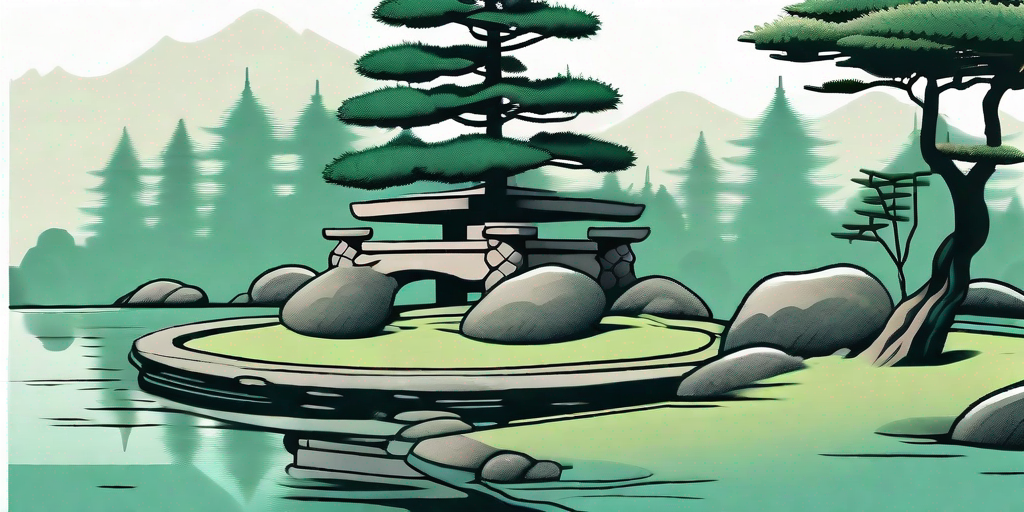
Ah, the Japanese Pine Tree. A symbol of tranquility, longevity, and resilience. This tree is not just a plant, but a piece of living art that has graced Japanese landscapes and gardens for centuries. If you're looking to bring a slice of Zen into your own backyard, you've come to the right place. Let's embark on this journey of cultivating and caring for your very own Japanese Pine Tree.
The Art and Science of Growing Japanese Pine Trees
Before we dive into the nitty-gritty of pine tree cultivation, let's take a moment to appreciate the beauty of these trees. With their twisted trunks and cloud-like foliage, they are a sight to behold. But don't be fooled by their delicate appearance. These trees are as tough as they come. They can withstand harsh weather conditions and even survive in poor soil. Now, isn't that something?
But let's not get carried away. Growing a Japanese Pine Tree is not a walk in the park. It requires patience, dedication, and a bit of green thumb magic. But don't worry, we've got you covered. Here's a step-by-step guide to help you get started.
Choosing the Right Variety
The first step in your pine tree journey is choosing the right variety. There are several types of Japanese Pine Trees, each with its own unique characteristics. The most popular ones are the Black Pine (Pinus thunbergii), Red Pine (Pinus densiflora), and White Pine (Pinus parviflora). Choose one that suits your climate and aesthetic preferences.
Black Pine is known for its rugged beauty and ability to withstand coastal conditions. Red Pine, on the other hand, is loved for its vibrant bark and elegant form. White Pine is prized for its soft, blue-green needles and graceful silhouette. Take your pick!
Planting Your Tree
Once you've chosen your tree, it's time to get your hands dirty. Literally. Planting a Japanese Pine Tree is a hands-on job that requires careful preparation. You'll need to select a suitable location, prepare the soil, and plant the tree at the right depth.
The ideal location for a Japanese Pine Tree is a sunny spot with well-drained soil. These trees don't like wet feet, so avoid areas where water tends to pool. As for soil preparation, you'll need to add organic matter to improve its structure and fertility. And when it comes to planting depth, make sure the top of the root ball is level with the ground surface.
Caring for Your Japanese Pine Tree
Now that you've planted your tree, it's time to roll up your sleeves and get to work. Caring for a Japanese Pine Tree involves regular watering, feeding, pruning, and pest control. But don't worry, it's not as daunting as it sounds. With a bit of practice and patience, you'll soon get the hang of it.
Watering should be done regularly, especially during dry periods. However, be careful not to overwater as this can lead to root rot. Feeding should be done in spring and fall with a slow-release fertilizer. Pruning is an art in itself and involves removing dead or diseased branches, shaping the tree, and controlling its size. As for pest control, keep an eye out for common pests like pine beetles and caterpillars.
Pruning: The Art of Shaping
Pruning is not just about keeping your tree healthy, it's also about shaping it into a work of art. This is where the art of bonsai comes into play. Bonsai is a Japanese art form that involves growing and shaping trees in containers. It's all about creating a miniature, but realistic representation of nature.
When pruning your Japanese Pine Tree, you'll need to make strategic cuts to create the desired shape. This could be a formal upright style, a slanting style, or a cascading style. The choice is yours. Just remember to prune with care and respect for the tree's natural form.
FAQs
Now, let's tackle some of the most frequently asked questions about Japanese Pine Trees. Because let's face it, we all have questions, and sometimes, the answers are not as straightforward as we'd like them to be.
How often should I water my Japanese Pine Tree?
Watering frequency depends on several factors including the tree's age, the weather, and the soil type. Generally, young trees need more frequent watering than mature ones. During hot, dry periods, you may need to water your tree every few days. During cooler, wetter periods, once a week may be enough. The key is to keep the soil moist, but not waterlogged.
When is the best time to prune my tree?
The best time to prune your Japanese Pine Tree is in late winter or early spring, before the new growth starts. This is when the tree is dormant and less likely to bleed sap. However, minor pruning can be done at any time of the year.
What should I do if my tree gets infested with pests?
If your tree gets infested with pests, the first step is to identify the culprit. Once you know what you're dealing with, you can choose the appropriate treatment. This could be a pesticide, a biological control, or a cultural control. Remember, prevention is better than cure, so keep a close eye on your tree and act quickly at the first sign of trouble.
Conclusion
There you have it, a comprehensive guide to cultivating and caring for your own Japanese Pine Tree. It's a journey that requires patience and dedication, but the rewards are well worth it. So go ahead, bring a touch of Zen into your backyard. You won't regret it.
And remember, every tree has its own personality. So take the time to get to know your tree, understand its needs, and nurture it with love and care. After all, a happy tree is a beautiful tree. And who doesn't want a beautiful tree in their backyard?















